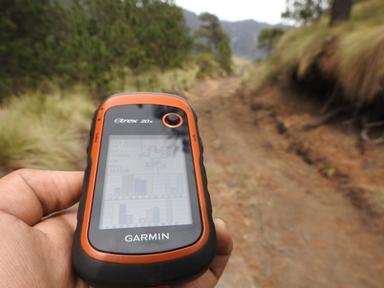Quiz Answer Key and Fun Facts
1. The most common type of geocache is the traditional cache. The traditional cache is some type of container with at least a log and sometimes some other items. The coordinates given by the placer of the cache should point right to, or in the general area of, the cache. Traditional caches come in several sizes. Which of the following is not an official traditional cache size?
2. Geocaching.com offers many different types of caches. Some, however, are no longer available for new cache placements. Of the following real cache types, which is currently a freely available option for new cache placements?
3. Mystery or Unknown caches are my favorites. These involve more than just plugging coordinates into your GPS, finding the cache, and signing the log. Which of the following are common characteristics of Mystery/Unknown caches?
4. The Unknown (mystery) cache is a sort of catchall for not classifiable cache types. Which of the following best describes the icon that represents the unknown cache?
5. The multi-cache is one of the more challenging cache types. As the name indicates, completing this cache involves multiple stages. What is the absolute minimum number of stages required for a geocache to be considered a multi-cache?
6. Though they come in different sizes and shapes, what is one characteristic that a traditional cache must have to qualify as such?
7. Virtual caches are unique in that there is no container to find and therefore no log to sign. Virtual caches can be a wide variety of interesting locations. Which of the following would not be an ideal location for a virtual cache?
8. The most rare types of cache is the event cache. As the name implies, the event cache is a geocaching related gathering of some sort. Which of the following would be ideal for an event cache?
9. Like an event cache, a CITO cache is a gathering of cachers but with the specific purpose of cleaning an area that has become polluted over time. Which of the following would a geocacher want to bring to a CITO?
10. As you log geocaches online at www.geocaching.com, you may feel compelled in your log to write TFTC! What do these initials stand for?
Source: Author
bmrsnr
This quiz was reviewed by FunTrivia editor
ozzz2002 before going online.
Any errors found in FunTrivia content are routinely corrected through our feedback system.


